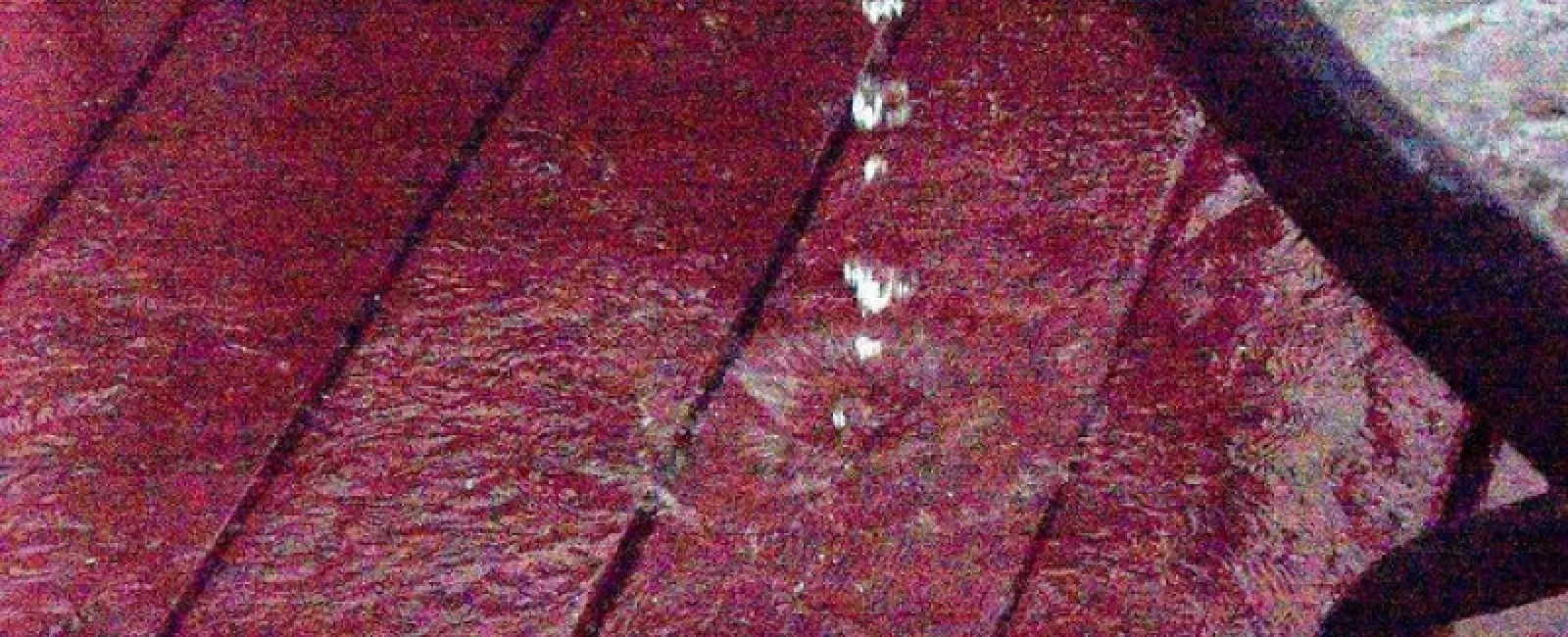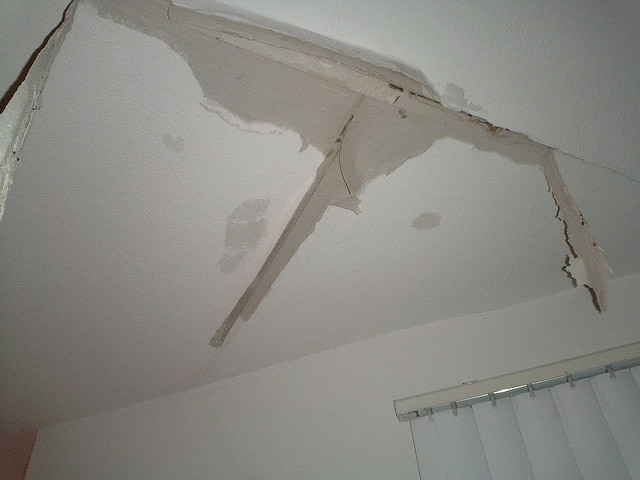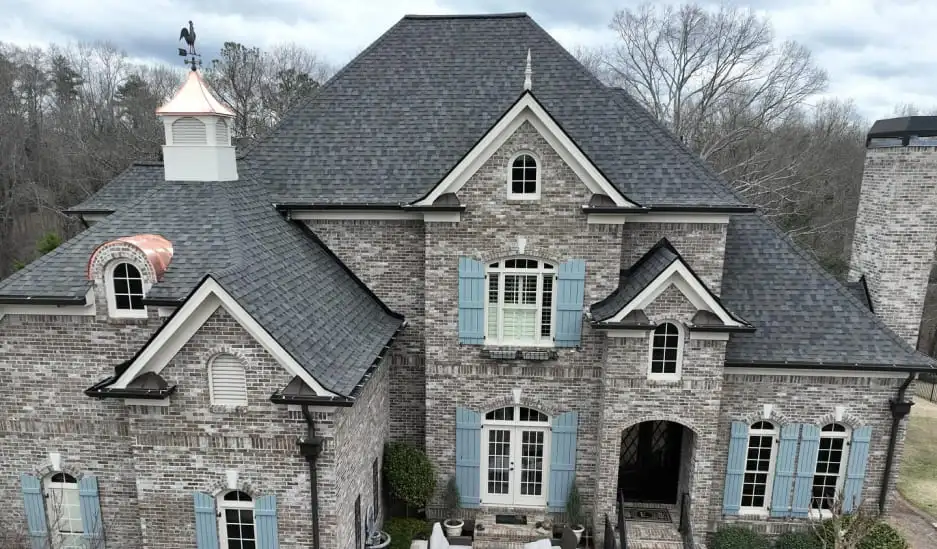Have you noticed a leak in your ceiling? Careful! Just because you spot water damage doesn’t mean you know where the problem is. The source of a leak can prove difficult to find: Let’s talk about why.
Ceiling Leaks & Their Twisty Ways
Here’s the bottom line: That leak you see on your ceiling does not show you where leak actually started. Many times, the leaks in your roof that are letting water in are someplace else entirely – you can’t just draw a mental arrow straight up and assume that’s where the problem is located.
The two main causes of this odd behavior are gravity and structure. When a leak first opens up in a roof (often through a damaged shingle), water tends to follow gravity and start flowing down the sheathing or rafters. It may not actually enter the inside of your house until much later! From here, structure also plays an important role. The water may circle vents, skylights, support beams, and other structures before finally forming on your ceiling. The distance between the roof and the ceiling, as well as the shape of your attic or crawlspace, can all create a little maze that leaks may follow, making the source hard to follow.
Dry Footprints & Other Problems
Additional problems can complicate finding a leak, too. For example, there is such a thing as a “dry footprint” that we see happen several days after a storm. In this case, the leak’s path is still wet, while the area where the water entered is dry. This can make leaks tricky to find or lead to false assumptions.
Also, some leaks may not start in the roof at all. If you have a lot of attic condensation, the condensation could be forming leaks from your attic even if there’s nothing wrong with your roof. This is another reason why it’s important to ask for a professional inspection of the leak even if you think you know where the problem is. It’s easy to be surprised.
Common Sources
So, where do leaks tend to come from? Often, there are several places that an experienced roofer will look first – starting with the shingles. There’s a symptom called “telegraphing“. In this case, shingles show problems and patterns forming beneath them, especially when covering up a layer of old shingles. If the shingles are telegraphing a particularly wavy or lumpy patch, that’s a great place to start looking for leaks. Roofers also like to check around chimneys, valleys, and ice dams— which may all develop issues, especially in winter months.
Remember, if you see a leak in your ceiling, it can be very difficult to tell where it started. You can take a flashlight up to your attic or crawlspace to look for more signs, but ultimately a professional roofer is your best bet for finding and fixing the true source of the leak.





